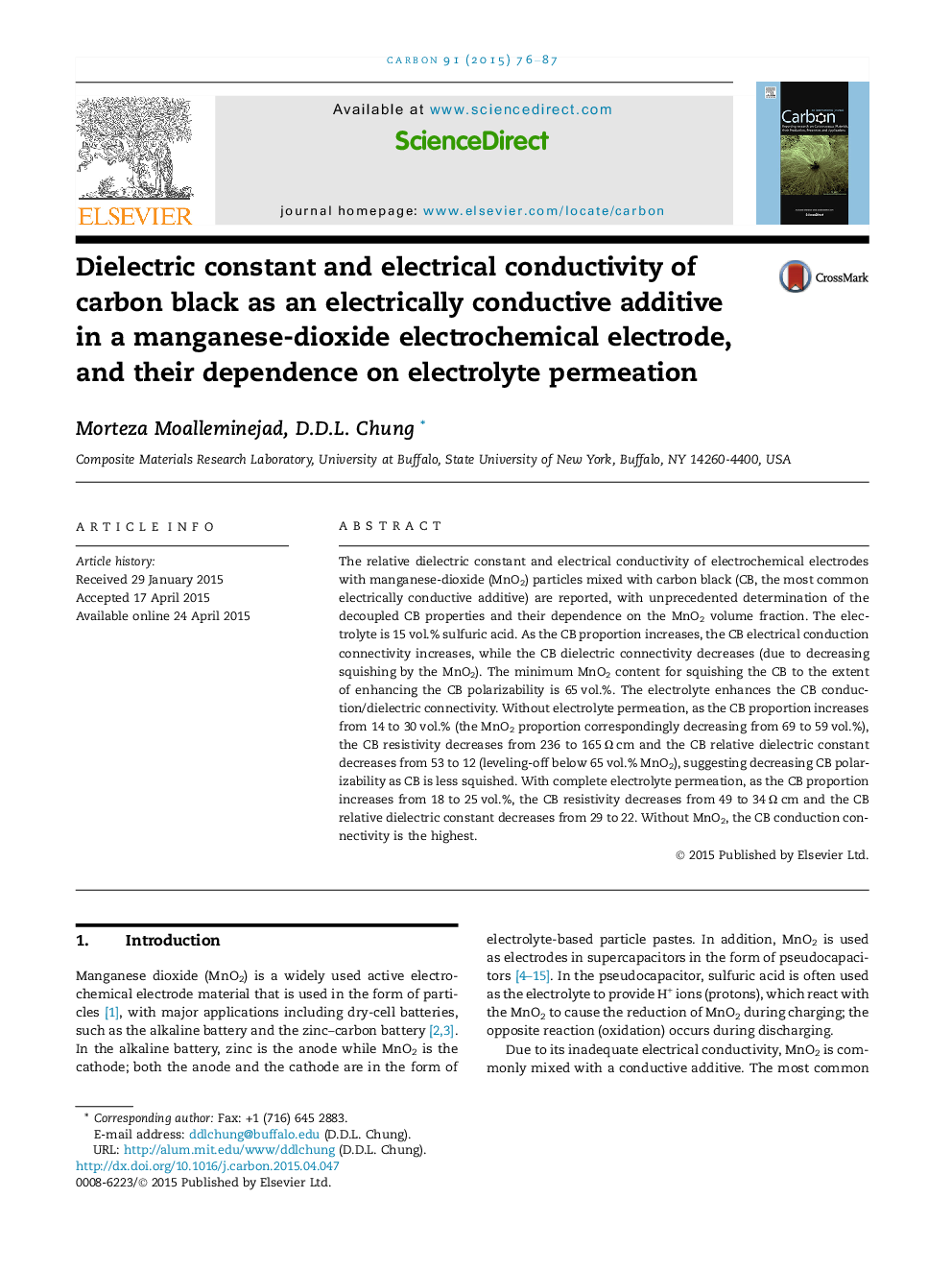| Article ID | Journal | Published Year | Pages | File Type |
|---|---|---|---|---|
| 7851629 | Carbon | 2015 | 12 Pages |
Abstract
The relative dielectric constant and electrical conductivity of electrochemical electrodes with manganese-dioxide (MnO2) particles mixed with carbon black (CB, the most common electrically conductive additive) are reported, with unprecedented determination of the decoupled CB properties and their dependence on the MnO2 volume fraction. The electrolyte is 15 vol.% sulfuric acid. As the CB proportion increases, the CB electrical conduction connectivity increases, while the CB dielectric connectivity decreases (due to decreasing squishing by the MnO2). The minimum MnO2 content for squishing the CB to the extent of enhancing the CB polarizability is 65 vol.%. The electrolyte enhances the CB conduction/dielectric connectivity. Without electrolyte permeation, as the CB proportion increases from 14 to 30 vol.% (the MnO2 proportion correspondingly decreasing from 69 to 59 vol.%), the CB resistivity decreases from 236 to 165 Ω cm and the CB relative dielectric constant decreases from 53 to 12 (leveling-off below 65 vol.% MnO2), suggesting decreasing CB polarizability as CB is less squished. With complete electrolyte permeation, as the CB proportion increases from 18 to 25 vol.%, the CB resistivity decreases from 49 to 34 Ω cm and the CB relative dielectric constant decreases from 29 to 22. Without MnO2, the CB conduction connectivity is the highest.
Related Topics
Physical Sciences and Engineering
Energy
Energy (General)
Authors
Morteza Moalleminejad, D.D.L. Chung,
